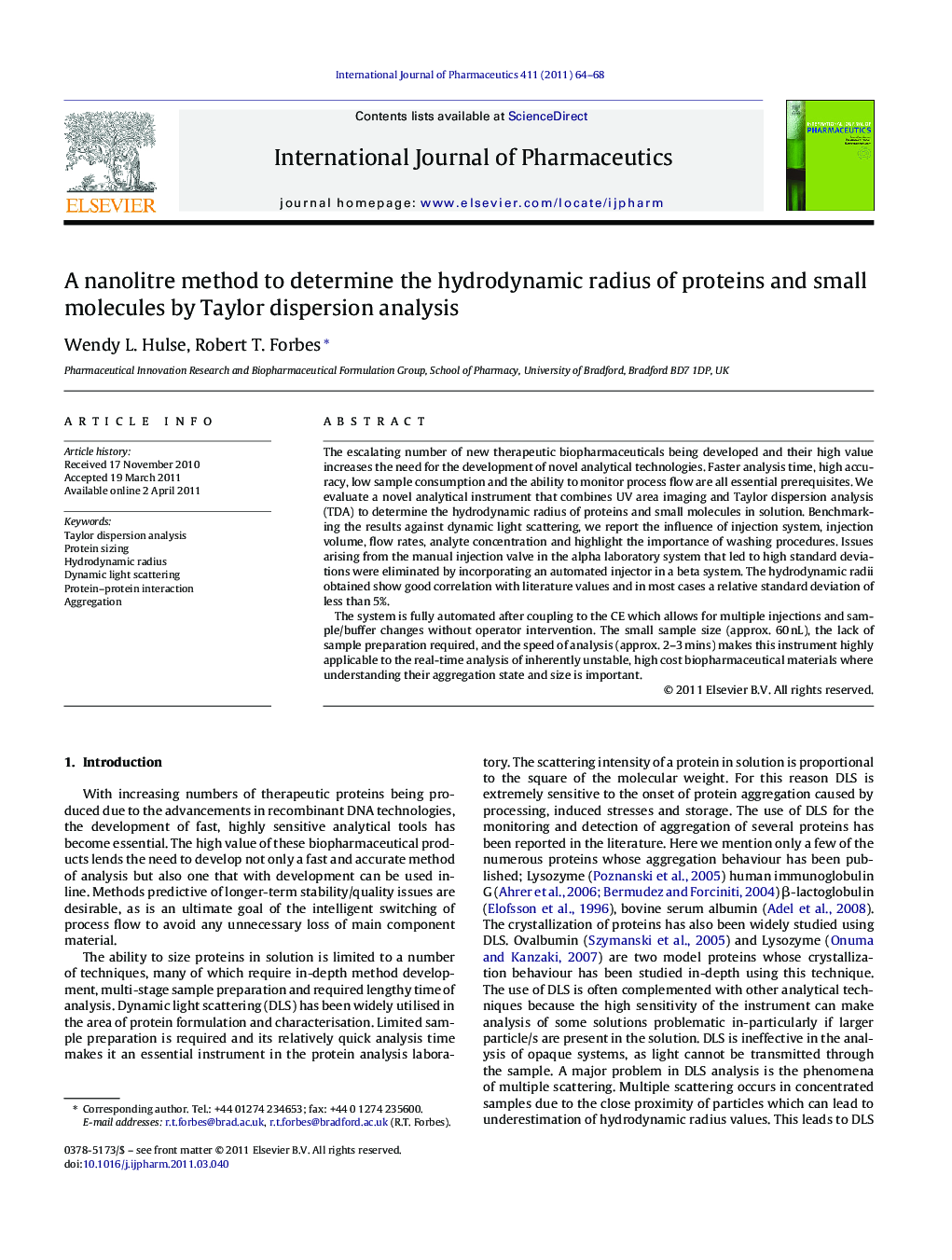| کد مقاله | کد نشریه | سال انتشار | مقاله انگلیسی | نسخه تمام متن |
|---|---|---|---|---|
| 2503560 | 1557431 | 2011 | 5 صفحه PDF | دانلود رایگان |

The escalating number of new therapeutic biopharmaceuticals being developed and their high value increases the need for the development of novel analytical technologies. Faster analysis time, high accuracy, low sample consumption and the ability to monitor process flow are all essential prerequisites. We evaluate a novel analytical instrument that combines UV area imaging and Taylor dispersion analysis (TDA) to determine the hydrodynamic radius of proteins and small molecules in solution. Benchmarking the results against dynamic light scattering, we report the influence of injection system, injection volume, flow rates, analyte concentration and highlight the importance of washing procedures. Issues arising from the manual injection valve in the alpha laboratory system that led to high standard deviations were eliminated by incorporating an automated injector in a beta system. The hydrodynamic radii obtained show good correlation with literature values and in most cases a relative standard deviation of less than 5%.The system is fully automated after coupling to the CE which allows for multiple injections and sample/buffer changes without operator intervention. The small sample size (approx. 60 nL), the lack of sample preparation required, and the speed of analysis (approx. 2–3 mins) makes this instrument highly applicable to the real-time analysis of inherently unstable, high cost biopharmaceutical materials where understanding their aggregation state and size is important.
The novel detector is able to size proteins accurately over a wide range of conditions without the need for dilution or any stationary phase interaction. We anticipate the system to have potential in the detection of aggregates and the likelihood of their formation. We are exploring the utility of the system to screen formulation and purification buffer scenarios.Figure optionsDownload as PowerPoint slide
Journal: International Journal of Pharmaceutics - Volume 411, Issues 1–2, 15 June 2011, Pages 64–68